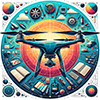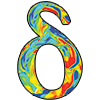Toggle Episode List
Theoretical Design and Analysis of Drones (UAVs) — Ep 01
Session 4
- Episode
- 01
- Run Time
- 48m 58s
- Published
- Oct 26, 2025
- Topic
- Drone (UAV)
- Course Progress
- 0%
About This Episode
Review of Aerodynamic Fundamentals.
Low Reynolds Number Flight.
Airfoil Selection for UAVs: Databases and critieria (L/D max, gentle stall).
Introduction to Lifting Line and Vortex Lattice Theory (the basis of AVL).

